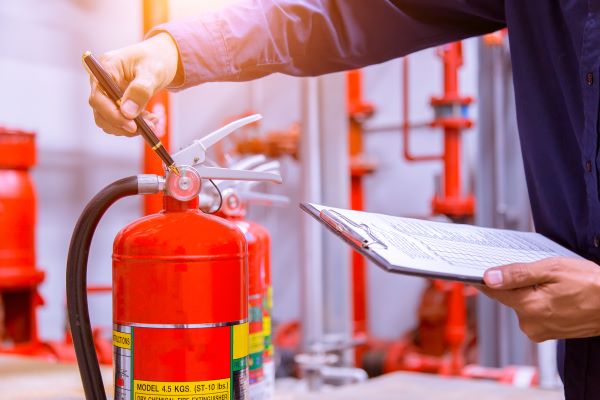
As the Health & Safety Executive says: “Most fires are preventable.” Indeed, in order to comply with the Regulatory Reform (Fire Safety) Order 2005, you “must take reasonable steps to reduce the risk from fire and make sure people can safely escape if there is a fire”. Under the Regulatory Reform (Fire Safety) Order 2005, employers/facilities managers or the owners of premises have a number of fire safety responsibilities. This includes appointing a ‘responsible person’ – or ‘responsible persons’ – to ensure adequate fire safety measures are taken in order to reduce the risks from fire. Here are the Health and safety regulations in connection with fire risk:
The responsible person must ensure they carry out a risk assessment that identifies the possible dangers as part of their fire safety duties. This includes taking into consideration the people who may be more at risk than others if a fire were to occur, for example, people with disabilities. They must also reduce the risk from fire as far as reasonably practicable, which includes the safe storage of flammable materials, as well as having a robust strategy in place for dealing with any fire emergency.
Practical steps include carrying out regular fire risk assessments, putting appropriate safety measures in place (for example, providing fire-fighting equipment), and providing staff with fire safety instruction and training, as well as planning for emergencies.
A fire can only thrive if there are three specific elements in play: a source of ignition, fuel, and oxygen. By taking precautions that remove one or two of these elements you will reduce the risk of fire.
Common sources of ignition are naked flames. According to the London Fire Brigade, 11% of office fires are caused by smoking-related issues, largely by lighted cigarettes not being disposed of properly. However, around a third of office fires are caused by electrical problems, and 14% are caused by lighting problems.
In cases where an electrical or lighting fault causes a spark, your premises can still be safe from the risk of fire as long as the source is not too close to flammable materials that can fuel a fire, for example, paper, display materials, textiles or waste.
Therefore, a straightforward way to reduce the risk of fire is to not store flammable materials next to electrical equipment. For the smokers, provide a convenient place for them to safely dispose of their cigarette butts and empty it regularly so they don’t just throw them in the nearest bin.
Oxygen is, of course, all around us, so we can’t switch it off. However, by keeping fire doors closed we can restrict the flow of oxygen around the building, helping to confine a fire breakout and giving people a chance to evacuate safely.
Many work premises now provide small kitchens or kitchenettes where staff can make hot drinks and heat up food. The more devices that produce heat, the greater the risk of something going wrong, so make sure you have fire blankets and fire extinguishers in the kitchen area.
The biggest risks from electrical appliances come from damaged wires or faulty equipment. Therefore, the best way to reduce the risk of fire caused by electrical equipment is to have regular Portable Appliance Testing, most often referred to as PAT testing. There is no regulation requiring you to organise PAT testing, but it is your responsibility to make sure appliances are kept in a safe condition.
And, of course, we can all do our bit by not overloading plug sockets and not using electrical items with frayed wires or that aren’t working properly.
If you are responsible for the health and safety of staff, customers and visitors, contact us to get more detailed information about our total fire safety management service, which can help you to ensure your business is safe and meets all legal obligations. We will undertake fire risk assessments; service and maintain your fire extinguishers, fire alarms and fire doors; and provide fire safety training for your employees.